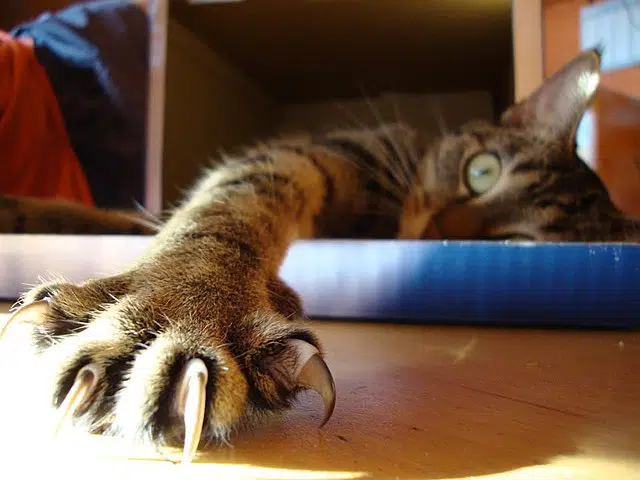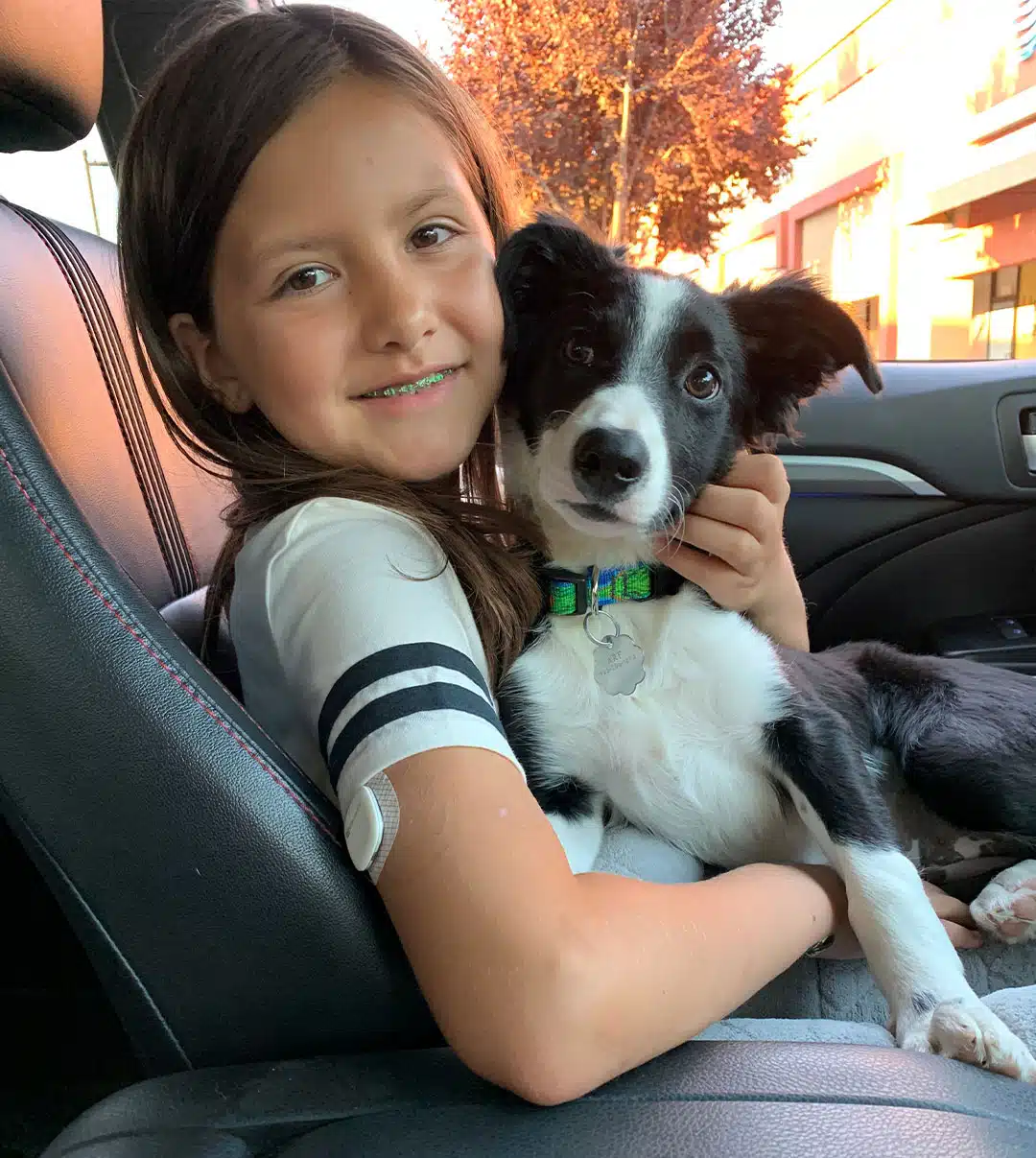
A cat’s grace, agility, and faultlessness sense of balance are, to a great extent, due to their retractable claws. Claws allow a cat to establish footing for walking, running, springing, climbing, or stretching. The outer parts of cats’ claws regularly become worn down and frayed. When a cat scratches, it pulls off the outer part and exposes sharp, smooth claws. Scratching is also a way of fulfilling the cat’s strong instinctive need to mark territory. Not only does a cat mark an object visibly by scratching it, but scratching deposits secretions from glands in the paws that become a signpost to other cats. Scratching may also serve psychological and physiological needs by providing comfort and expression in kneading. It also provides valuable stretching and foot-muscle exercise.
Declawing is not the same thing as a nail trim.
What is Declawing
Declawing is not the same thing as a nail trim. A nail trim is just cutting off the very tip of a nail — it is not painful or extreme. In contrast to regular nail maintenance, the standard declawing procedure calls for the removal of three things: the claw, the cells responsible for growth at the base, and part or all of the terminal bone of the toe. The operation is usually performed on the front feet. The amputation is comparable to the removal of human fingers at the last knuckle. The cat experiences considerable pain in the recovery and healing process.
Medical Risks of Declawing
In addition to the need for general anesthesia, which always presents a certain degree of risk to the patient’s health and life, infection and blood loss are possible surgical complications of declawing. An incorrectly positioned cut can remove too much of the toe, taking with it part of the entire toe pad. Great care must be taken after surgery to be sure that bandages wrapped tightly to control bleeding to not cut off circulation. And finally, declawed cats tend to get arthritis in their toes when they are older.
Behavioral Risks of Declawing
Some cats when deprived of their primary form of defense become nervous, fearful, and/ or aggressive. They may resort to using their only remaining defenses: their teeth. The constant state of stress caused by a feeling of defenselessness may make some cats more prone to disease. Constant pain from the procedure could also transform a once social and carefree kitty into a cranky misanthrope. Some cats stop using their litter box. This may be associated with the discomfort of scratching in the litter with painful paws after surgery.
Safety Risks of Declawing
A declawed cat must never be allowed outdoors. Their ability to defend themselves or escape danger has been seriously impaired. Even indoors, a cat without claws faces dangers. One physical effect of declawing is a gradual weakening of the muscles in the legs, shoulders, and back. The cat’s balance is impaired. A cat’s surefootedness depends on the ability to grasp quickly with claws, which means a declawed animal can easily be injured in a fall.
Header photo courtesy of Fabian


